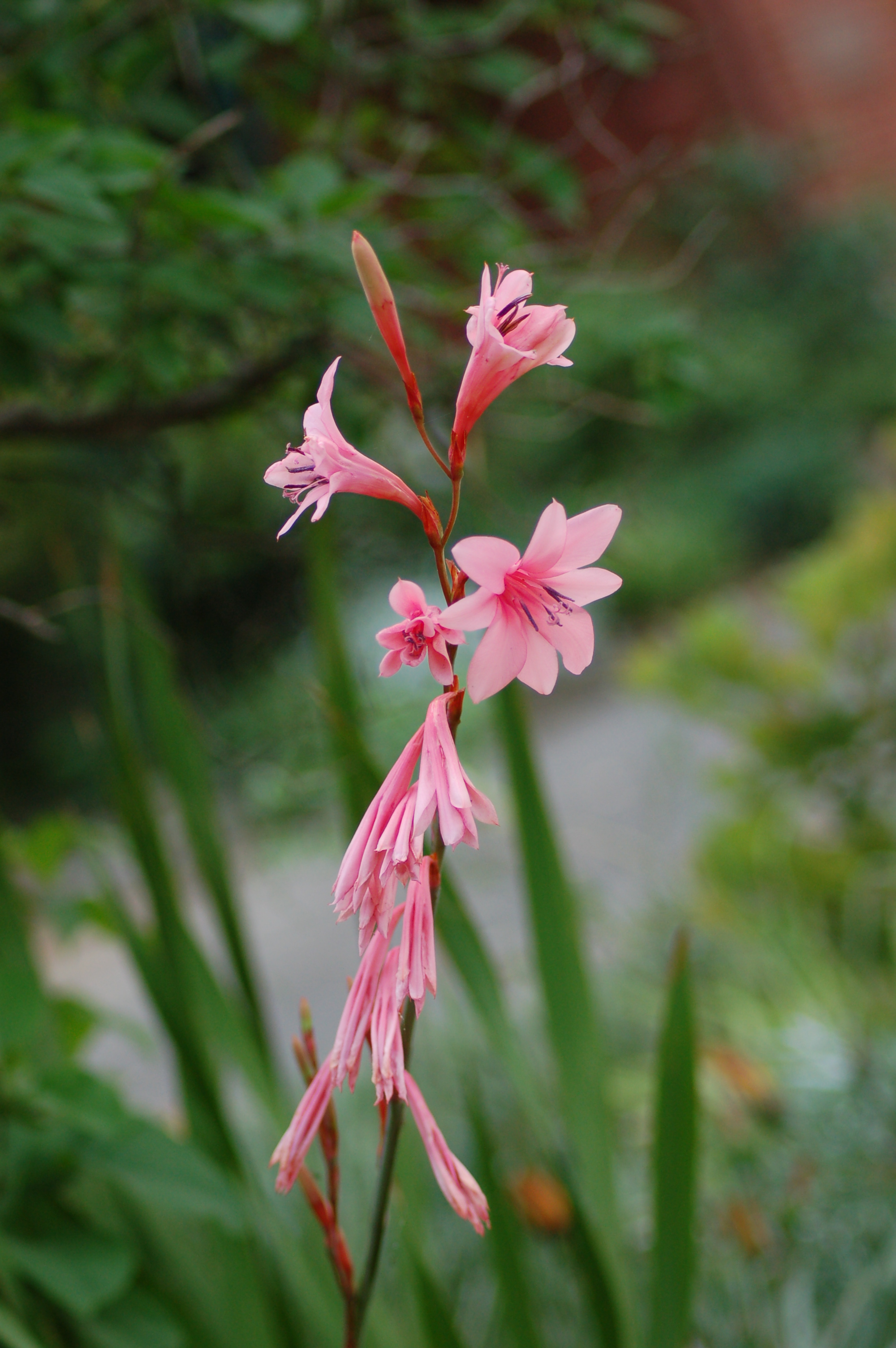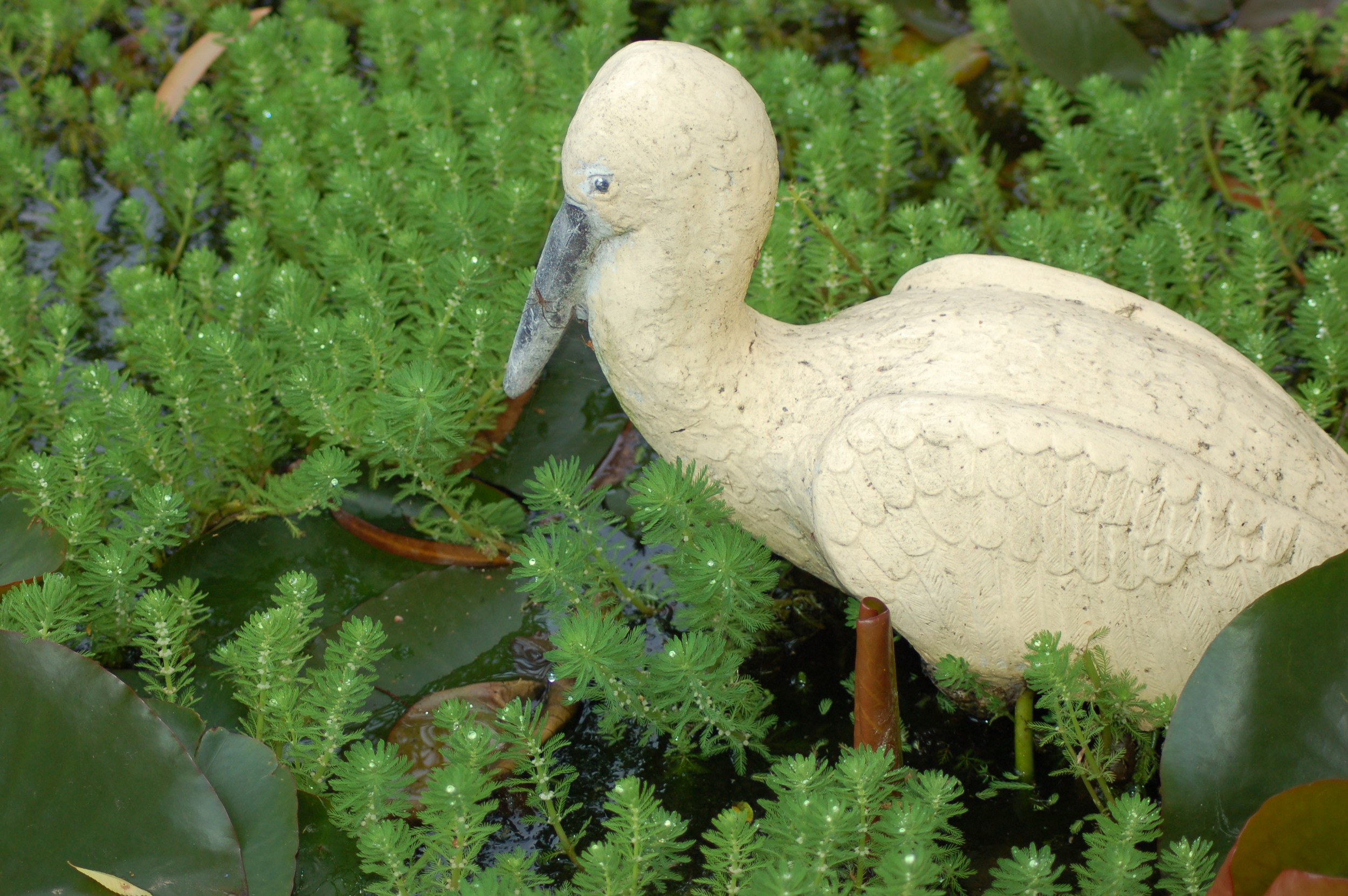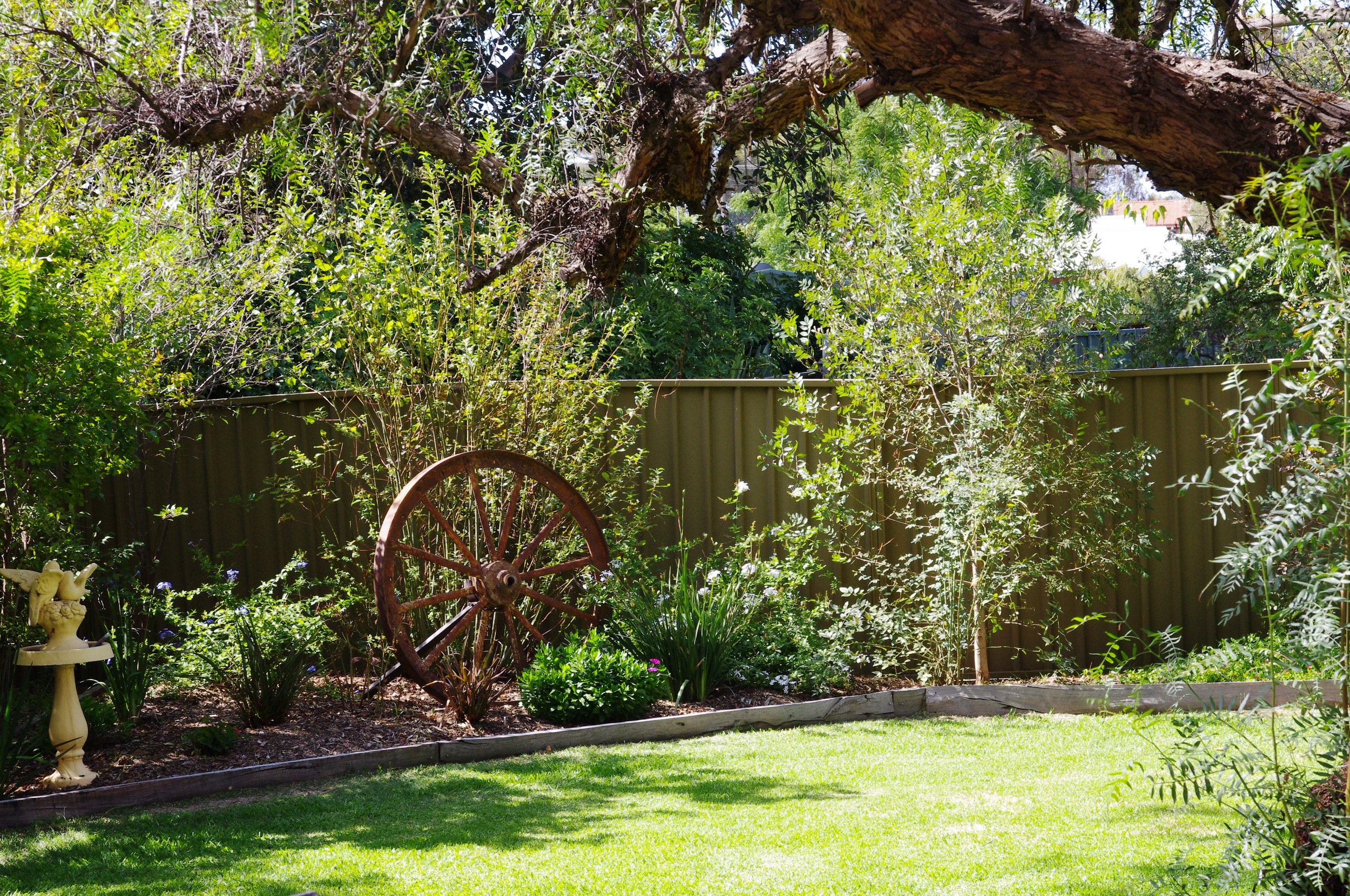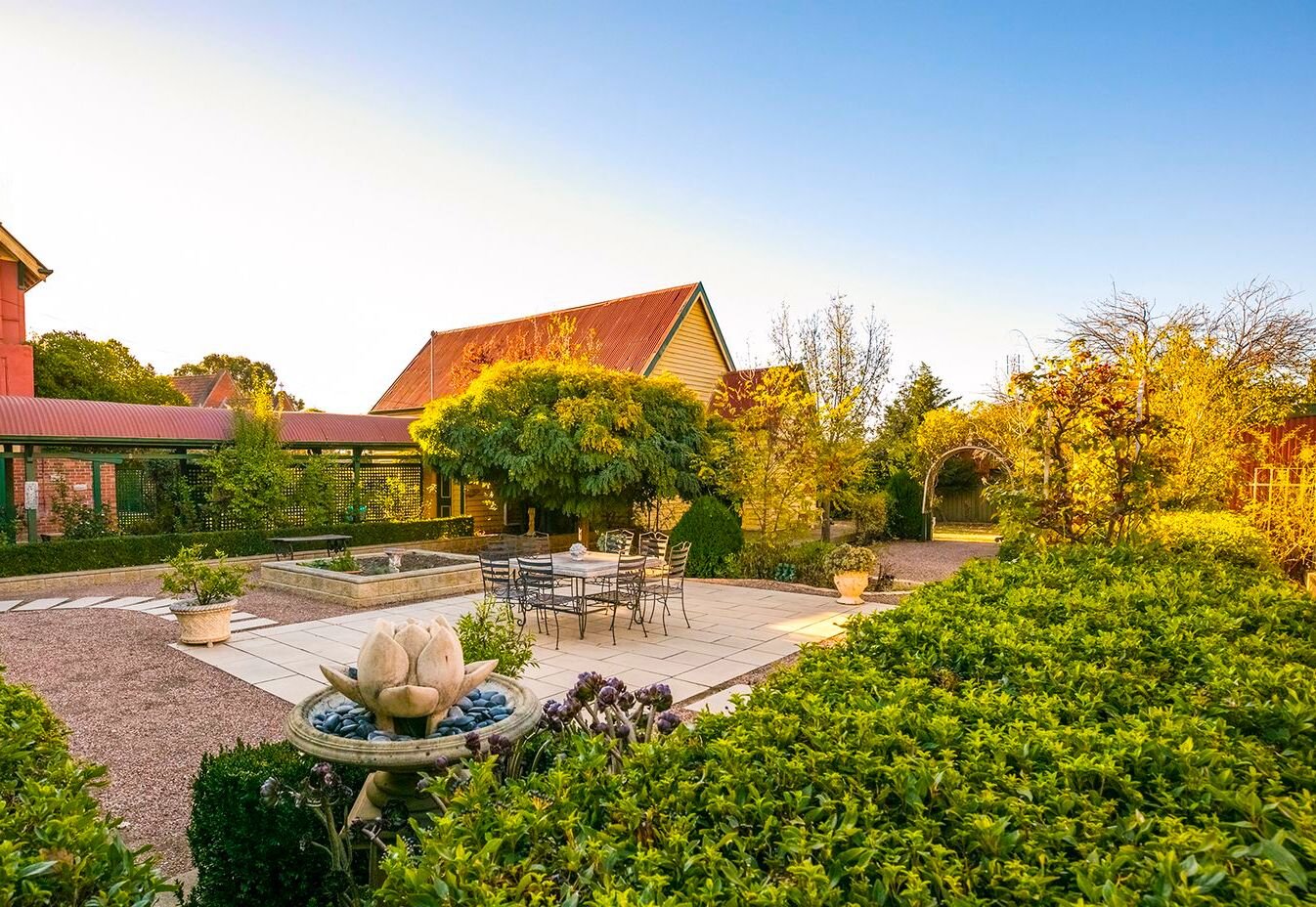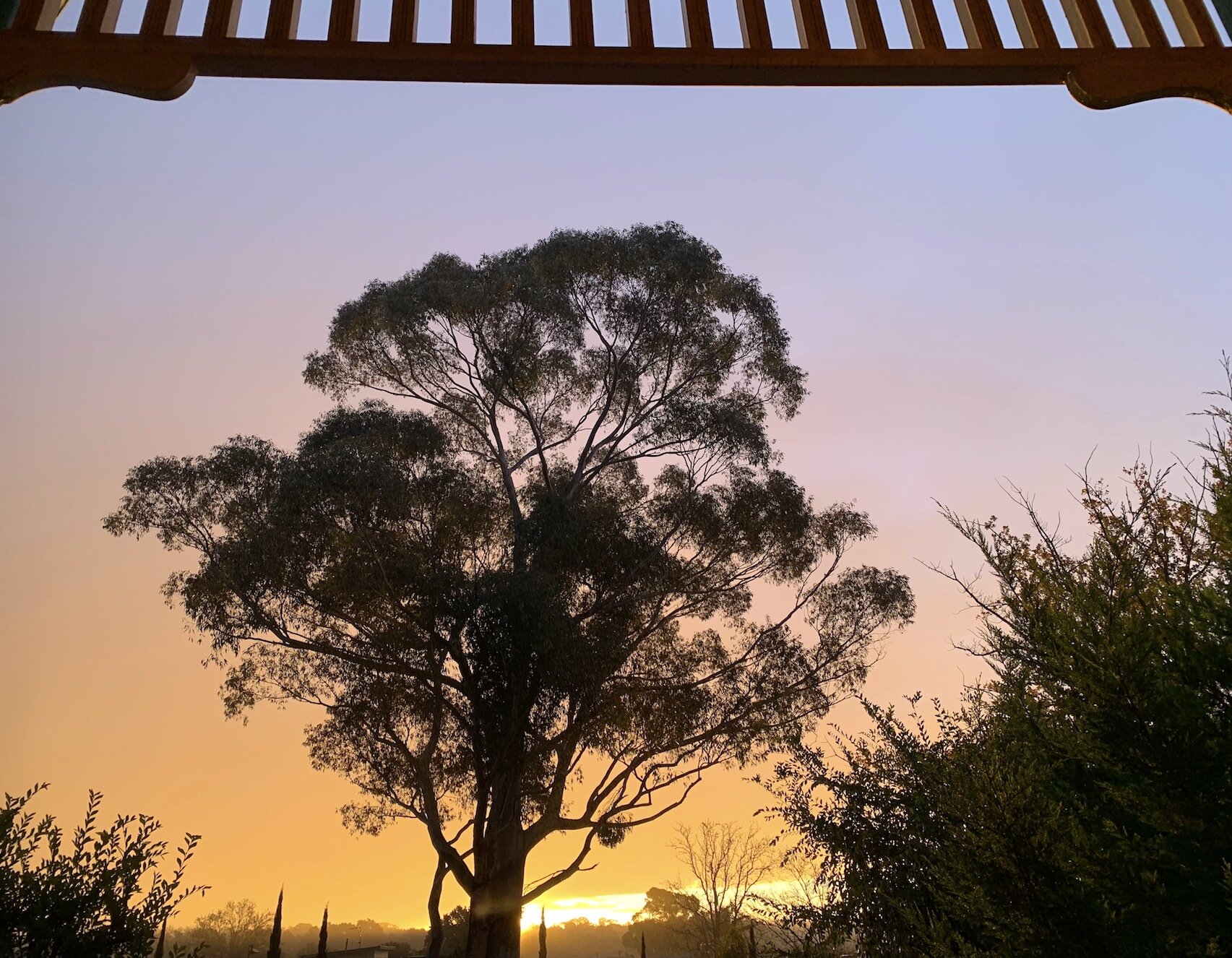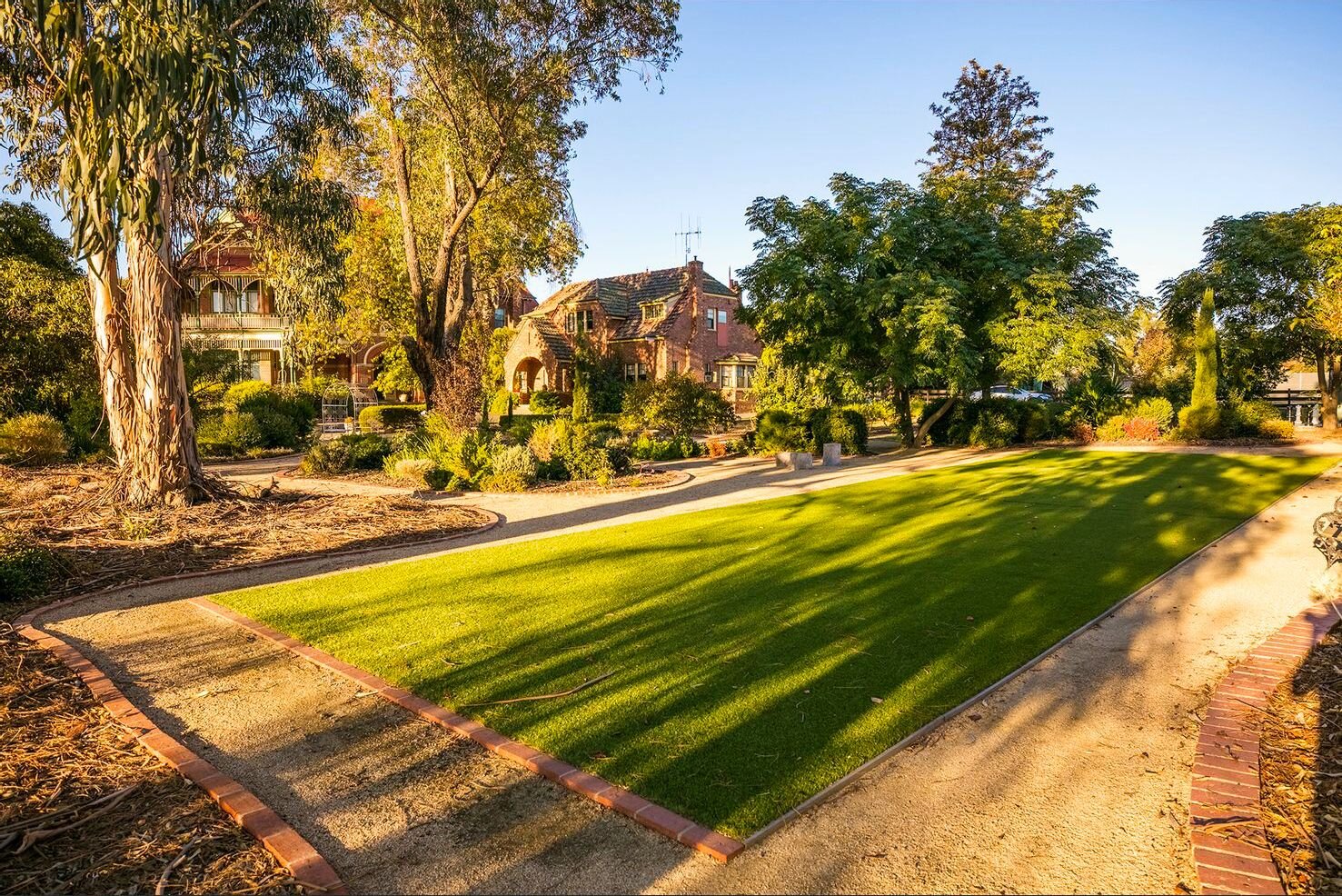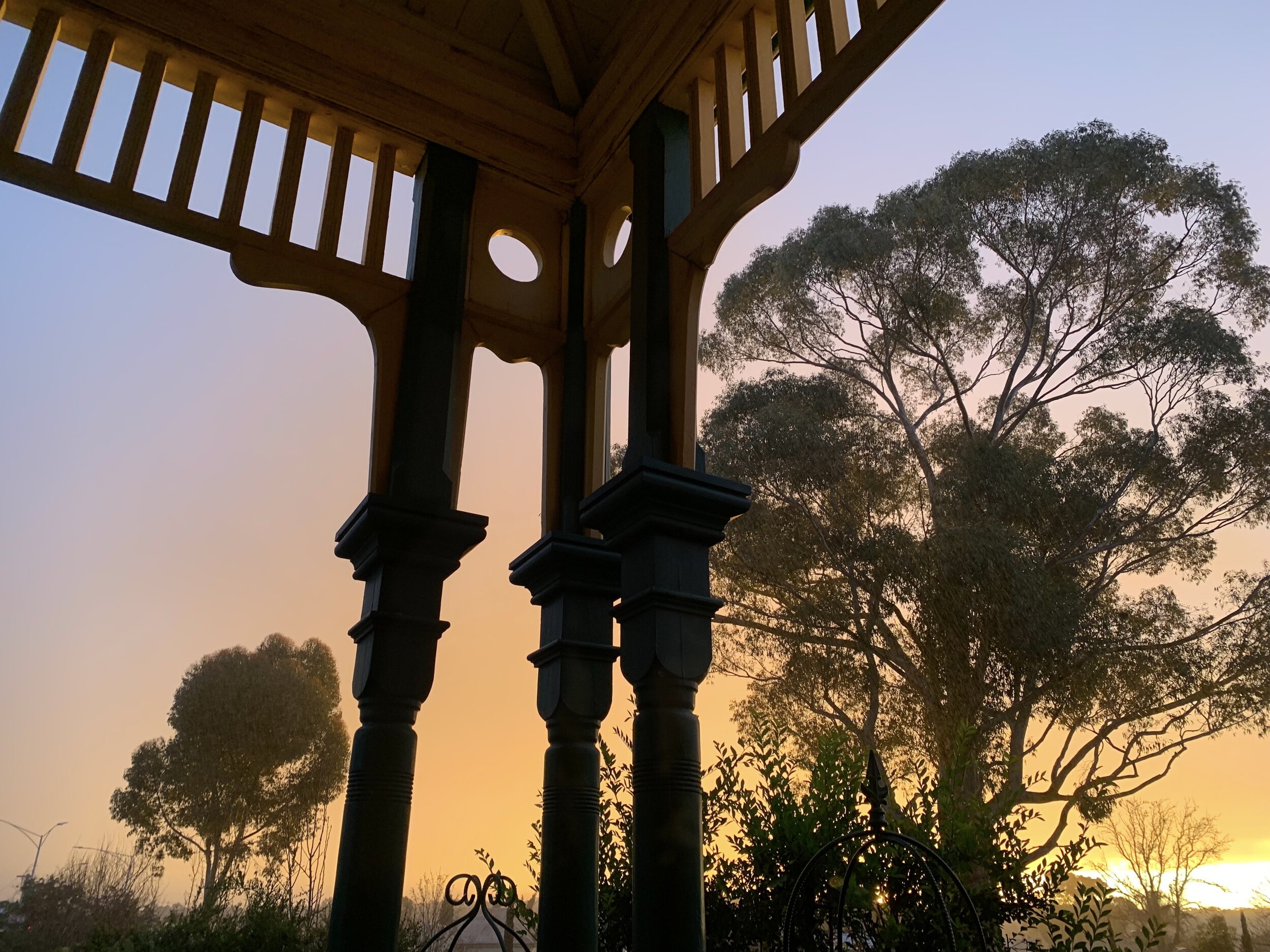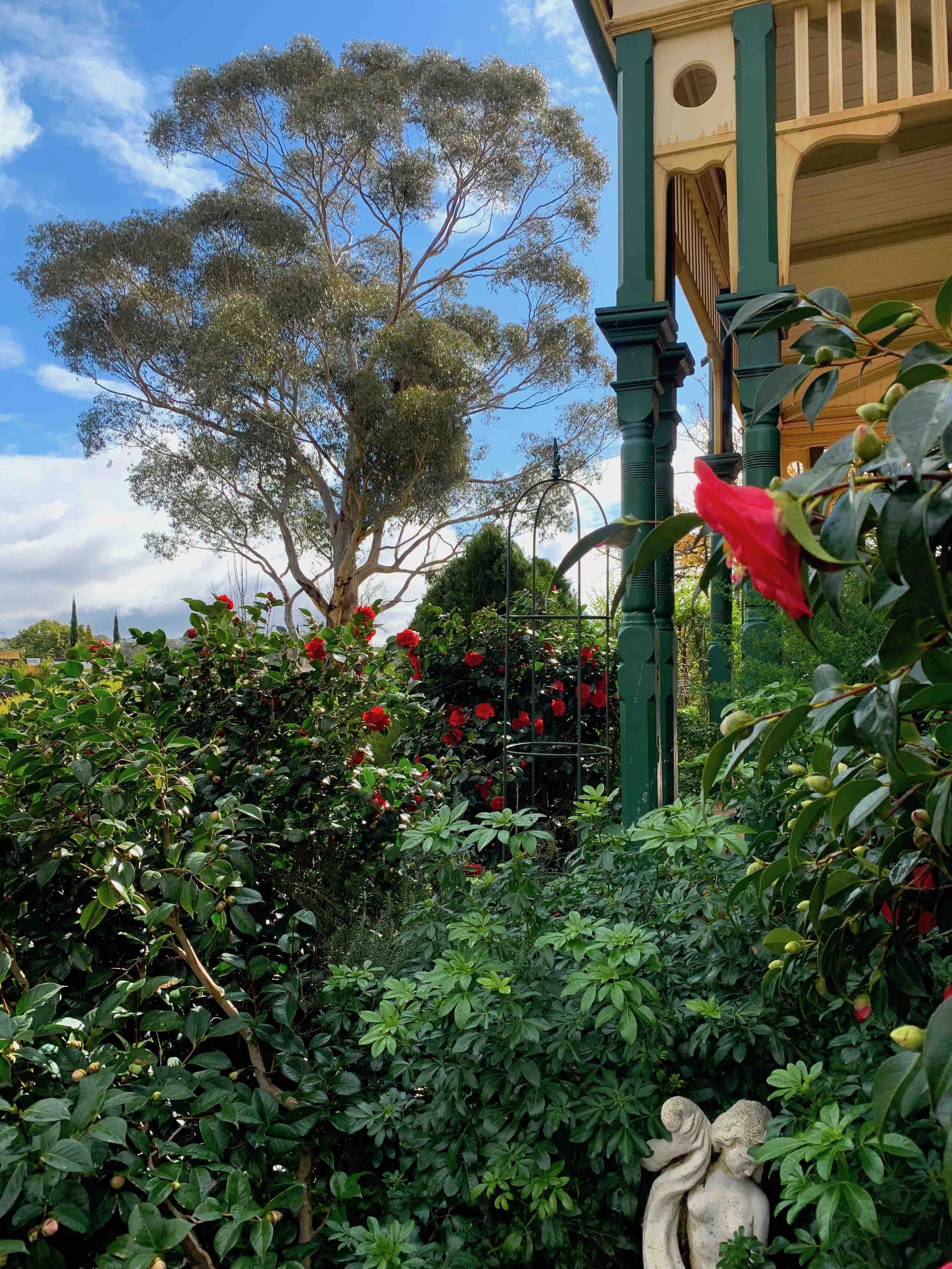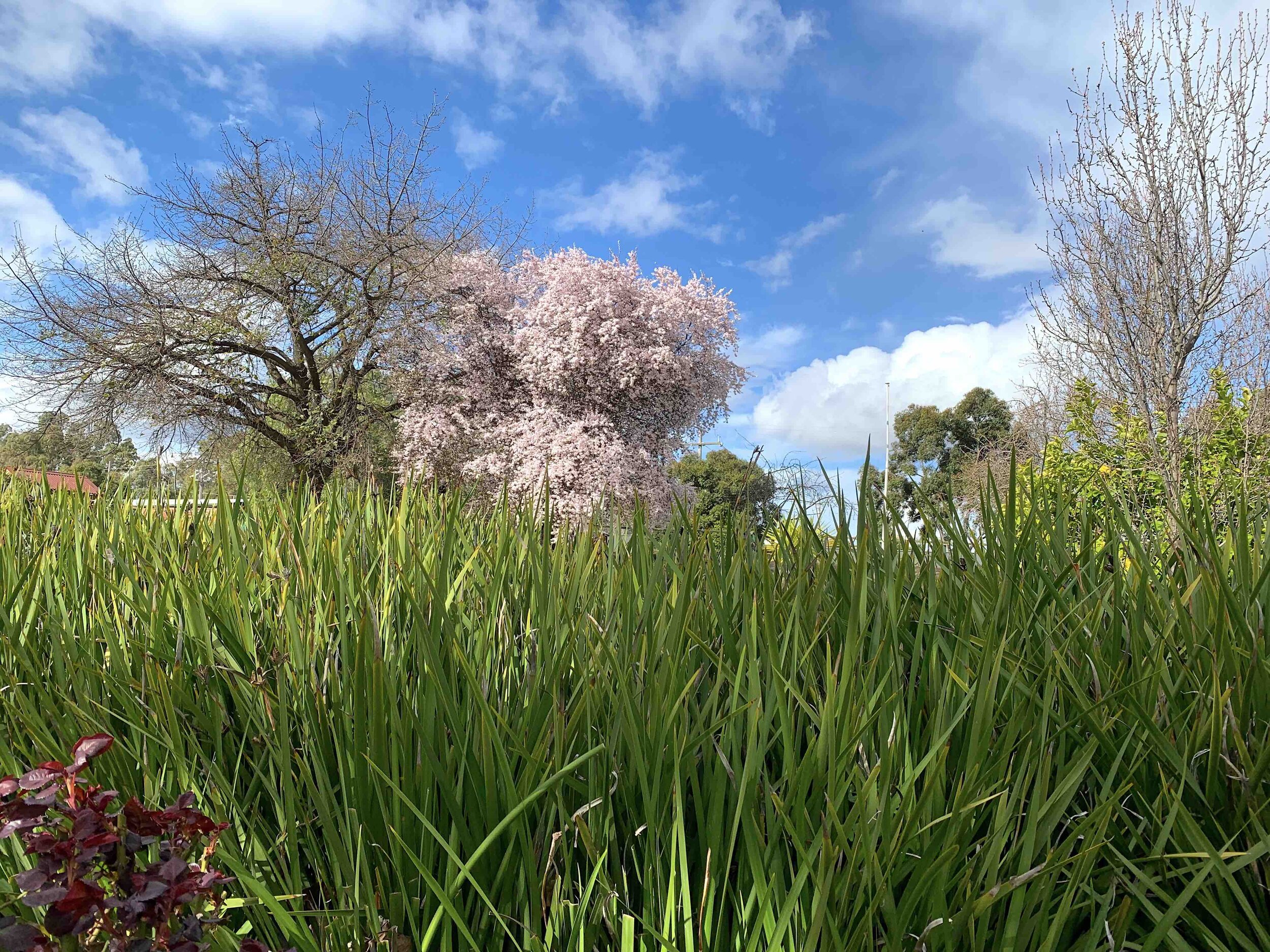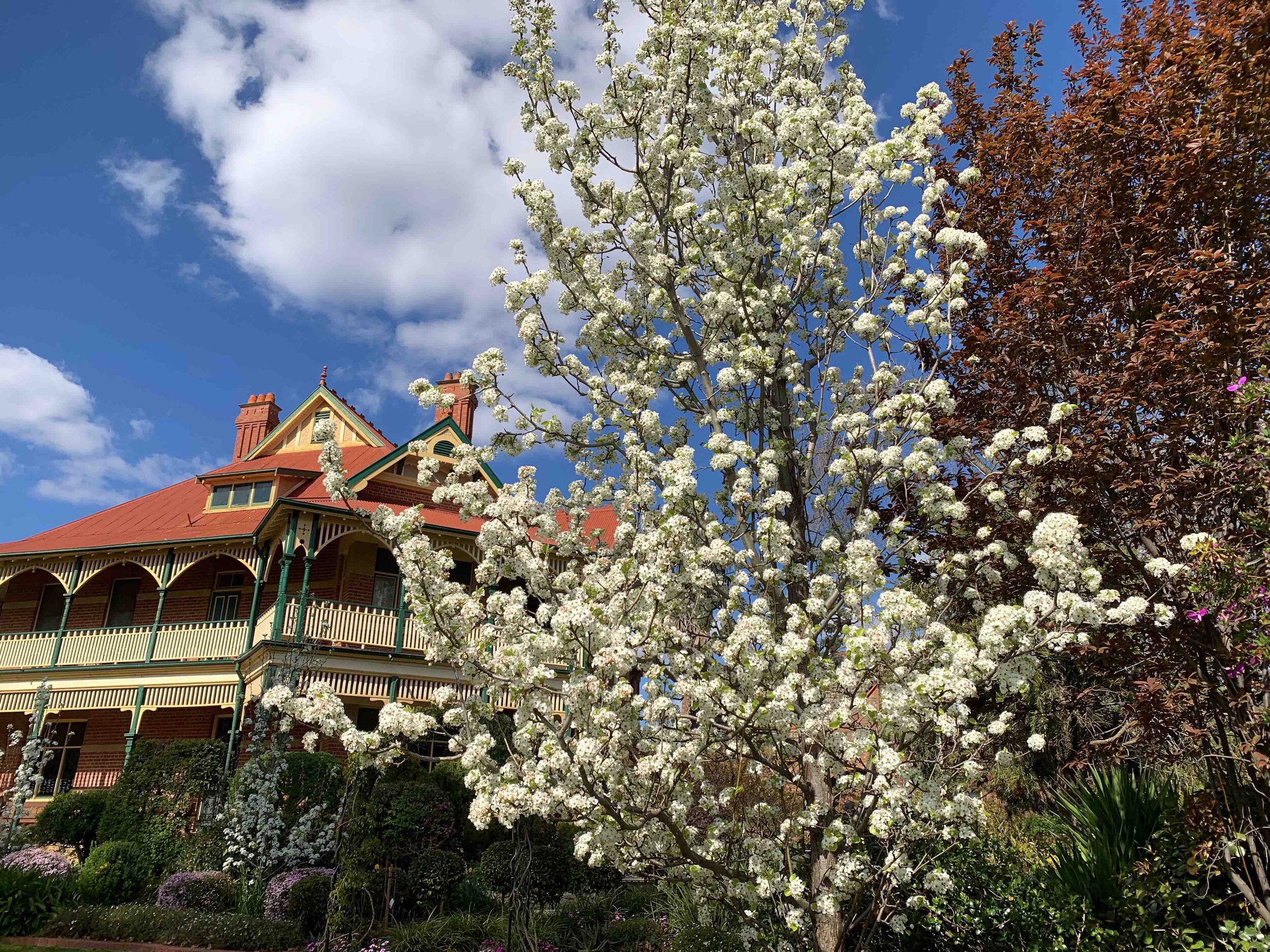Langley Estate Gardens
Find your perfect place
A winter sunset from the lower verandah of Langley Hall
Langley Hall, Langley Manor and the Lauriston Chapel are set amongst two-and-a-half acres of beautifully landscaped gardens, surviving intact since 1904 and extensively restored since the late 1980s.
In the early 1990s, the Bendigo Advertiser reported the Langley Estate gardens were ‘responding to the care now being paid them. A pond and fountain which had been buried for decades are now functional again, and hundreds of roses, shrubs and trees have been replanted.’
A spring morning with one of over 50 blossom trees in bloom
A late winter’s day with one of the large Prunus trees in blossom
Blooming with colour all year round, grand tall trees are interspersed with graceful garden beds; it is a garden to be slowly wandered and enjoyed.
Larger trees on the estate include enormous Eucalyptus trees living when the early gold miners first wandered up the Bendigo Valley to discover the famous ‘White Hills of Bendigo’ in 1851.
In fact, an interesting link to White Hills’ gold mining history is found at the edges of some of Langley Estate’s garden beds.
These garden beds are, uniquely, stone-edged with hundreds of the very conglomerate rocks that gave the ‘White Hills’ their name.
The giant chess set
In Bendigo: a history, the author Frank Cusack writes: ‘Of great interest to the early miners were the six or seven rounded white hills, ‘unique and peculiar to Bendigo’, that glistened against the dark of the nearby range at the northern end of the Bendigo Valley. Masses of smooth, water-washed quartz pebbles were cemented to a conglomerate of almost blinding whiteness that was possessed of a ‘most obdurate hardness’. Many a digger had blunted his pick on them without unravelling their secret.’
It was through this conglomerate rock ‘of almost blinding whiteness’ a party of Cornish miners dug, by hand, down nearly 70 feet to get their reward in 1852. ‘Suddenly, their picks sank into soft pipe-clay, white, satin-smooth and seemingly depthless. The men began tunnelling. Presently, the roof forming above them showered gold at their feet – the secret of Bendigo’s famous White Hills lay revealed.’
In addition to these fascinating relics ‘of a most obdurate hardness’ from White Hills’ gold mining past, another interesting historical link is that the estate gardens include century-old English Oak and Peppercorn trees planted by the early occupants of Langley.
There are over 300 roses, 50 blossom trees, extensive established hedges and a variety of other flowering shrubs surrounded by plants of both Australian and international origin.
Dozens of deciduous and evergreen trees include large Bay and Palm trees as well as a variety of fruit trees including Pomelo, Olive, Quince and Kaffir Lime trees.
The Lauriston Chapel on a winter’s day
The original fountain stands proudly near the front of the estate and a giant chess set is hidden down a wandering path lined with roses.
The picturesque Lauriston Chapel and sun-drenched courtyards, including a rear stone courtyard, are a delight to discover and enjoy.
Seating is scattered around the gardens and finding that certain perfect spot for some quiet relaxation, in any season, is always a pleasure!
Exploring the gardens, meandering around an expansive lawn or a secluded path, gives instant connection to the great and varied history of Langley.
Whether you feel the spirit of the early Bishops wandering the gardens deep in contemplation, the relief of the ANZAC ‘Diggers’ who found their rest at Langley after World War 1, the charisma of the Governors-General, Archbishops, Premiers and other dignitaries who have visited Langley, or the joie de vivre of the 1,500 children who ran around the gardens during the estate’s time as a Toddlers’ Home, you are sure to leave the Langley Gardens refreshed and relaxed.
You will always find your perfect place at Langley.
A bird enjoying a winter’s afternoon above the front lawns
